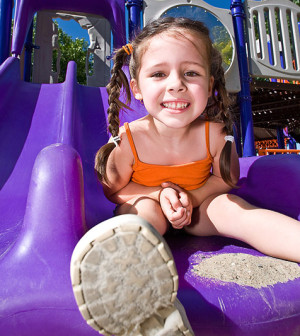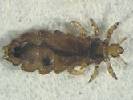- Double Mastectomy May Offer No Survival Benefit to Women With Breast Cancer
- Toxic Lead Found in Cinnamon Product, FDA Says
- Certain Abbott Blood Sugar Monitors May Give Incorrect Readings
- Athletes Can Expect High Ozone, Pollen Counts for Paris Olympics
- Fake Oxycontin Pills Widespread and Potentially Deadly: Report
- Shingles Vaccine Could Lower Dementia Risk
- Your Odds for Accidental Gun Death Rise Greatly in Certain States
- Kids From Poorer Families Less Likely to Survive Cancer
- Tough Workouts Won’t Trigger Cardiac Arrest in Folks With Long QT Syndrome
- At-Home Colon Cancer Test Can Save Lives
Keep Lice Off Your Child’s Head


It’s that time of year when your children are back in school — and you need to be on the lookout for head lice, an expert says.
Most common among kids in preschool, grade school and day-care settings, between 6 million and 12 million cases of head lice show up on the scalps of children aged 3 to 11 in the United States each year, according to the U.S. Centers for Disease Control and Prevention.
Contrary to popular belief, poor hygiene is not to blame. Head lice are spread mainly through direct head-to-head contact with an infected child. Because younger children tend to play closely together, they are at highest risk for infestation, explained Dr. Patricia Brown, a dermatologist at the U.S. Food and Drug Administration.
Thankfully, there are ways to lower the odds of infestation for your children. Teach them to avoid head-to-head contact with other children, and not to share clothing — especially hats, scarves and bandanas — and other items such as towels, hair ties, headphones, brushes and combs.
Do not allow your children to lie on beds, couches, pillows, carpets or plush toys that have recently been in contact with someone with head lice.
For any area that has been occupied by a person with head lice, thoroughly vacuum the floor and furniture. When possible, clean smaller items by machine washing them in hot water and putting them in the dryer on high heat. Whatever is not washable should be drycleaned or sealed in an airtight plastic bag and stored for two weeks.
When head lice fall off a person’s scalp, they only survive for a day or two if they cannot feed, according to an FDA news release. These blood-sucking insects do not fly or jump, and can only move by crawling.
If, despite your best efforts, an infestation happens, there are a number of prescription and over-the-counter treatments for head lice. But many “are not for use in children under the age of 2, so read the label carefully before using a product to make sure it is safe to use on your child,” Brown said in the news release.
Talk to your doctor or pharmacist for recommended treatments based on your child’s weight and age, follow the dosing instructions, and don’t use a product more often than directed unless told otherwise by a health care professional.
Once you have the medicine in hand, apply the product only to the scalp and scalp hair, not on other parts of the body. After rinsing, use a fine-toothed comb to remove dead lice and their eggs (nits), Brown said.
After you have completed the necessary treatment, the entire family should be checked for lice again a week later. If the treatment was not successful and lice are still found, contact your health care professional for advice.
More information
The American Academy of Family Physicians has more about head lice.
Source: HealthDay
Copyright © 2024 HealthDay. All rights reserved.










